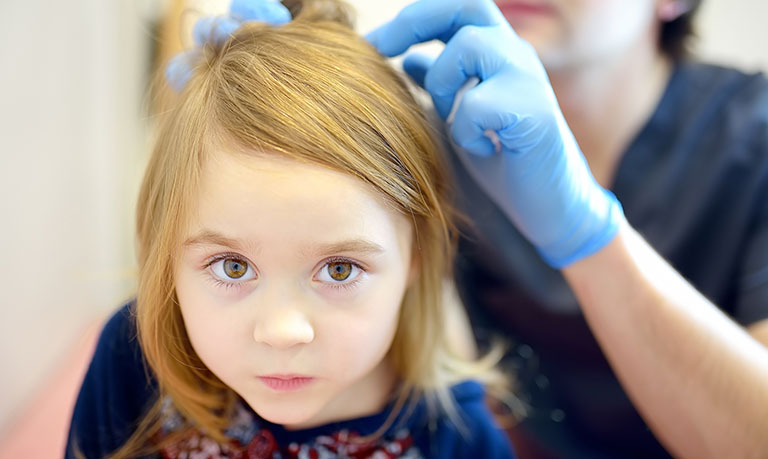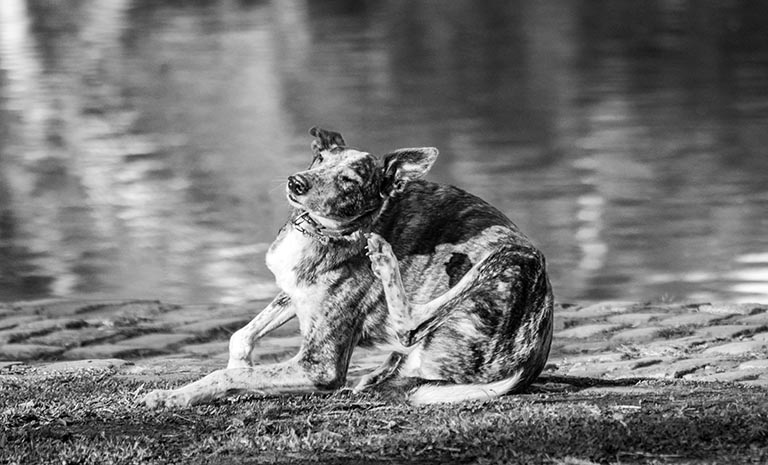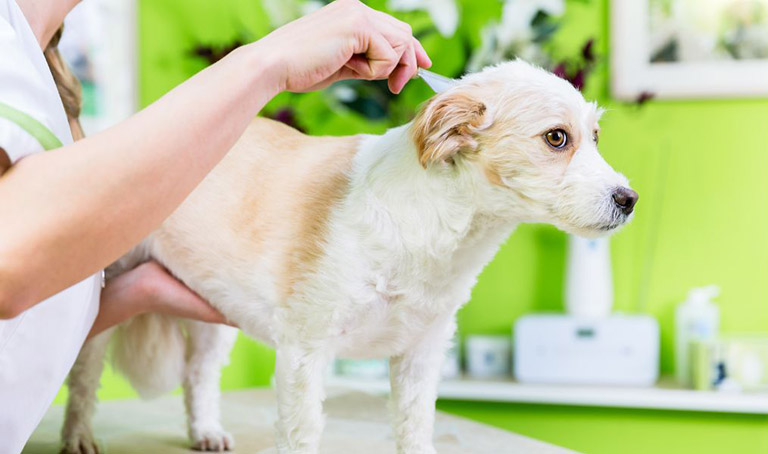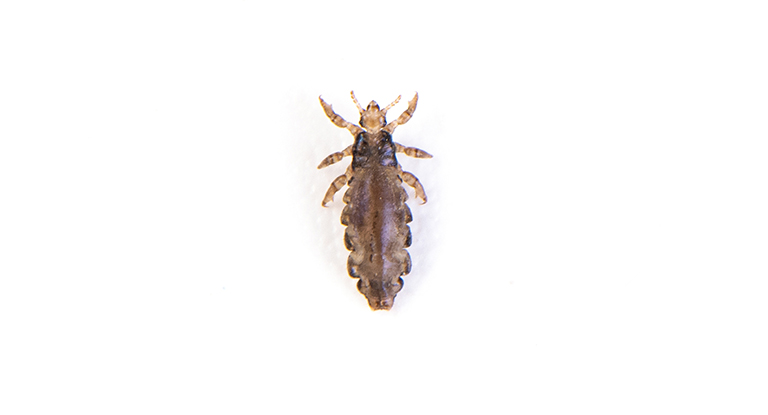Lice infestations in pets, though less common than fleas or ticks, can still cause significant discomfort and irritation for both dogs and cats. Lice are tiny, parasitic insects that live on the skin of animals, feeding on blood or skin debris, depending on the species. Understanding how pet lice are transmitted, recognizing the signs of an infestation and knowing how to treat and prevent them are essential steps in ensuring your pet stays lice-free. This blog covers everything from how pets contract lice to the most effective treatments and prevention methods, helping you protect your furry companions from these pesky parasites.
How Do Pets Get Lice?
Dogs and cats can contract pet lice through direct contact with an infested animal or indirectly from contaminated items, such as bedding, collars or grooming tools that an infested pet has used. Lice transmission typically occurs in environments where pets interact closely, like dog daycare centers, boarding kennels, grooming facilities and parks. For cats, outdoor encounters with other cats are common sources of lice infestations.
Dogs can be infested by two types of lice: chewing lice and sucking lice. Chewing lice feed on skin flakes and secretions, characterized by their blunt, flattened heads. In contrast, sucking lice rely on blood for sustenance and are equipped with sharp, pointed mouthparts to pierce the skin. Cats, however, are only susceptible to one species of lice, known as Felicola subrostrata.
We take cleanliness seriously in our grooming salons to ensure your pet’s safety and well-being. By keeping dogs separated and following strict hygiene protocols, we provide a secure environment for your furry friend. Watch this video to see all the ways we keep your pet safe.

Can Humans Get Lice From Pets?
The answer is no. Lice are species-specific, meaning they can only survive on their preferred host. A dog cannot give lice to a cat, and a cat cannot give lice to a dog. Similarly, if your children come home with lice, you don’t need to worry about the family pet being affected, just as your pet’s lice won’t spread to humans. Each species has its own type of lice, so eradication efforts remain focused on the affected species without crossing over to others.

Signs Your Dog or Cat Has Lice
Cats and dogs share common symptoms when infested with pet lice. Signs of a lice infestation include excessive itching, dry skin, matted fur, visible lice or nits (eggs), and irritated skin with sores or lesions caused by scratching and biting. Lice are usually found around the ears, neck, shoulders and undercoat. When inspecting your pet for lice, examine their coat closely, as lice eggs are often mistaken for dandruff. To tell the difference, gently shake your pet’s coat—if the white flakes fall off, it’s dandruff; if they remain stuck to the fur and skin, they are likely lice eggs.

Treatment: How to Eradicate Pet Lice
Once you’ve confirmed that your dog or cat has pet lice, it’s essential to act quickly to eradicate the infestation. The first step is to visit a veterinarian for a proper diagnosis, as many skin conditions can mimic the signs of lice. Once lice are confirmed, your vet will recommend the best treatment options. Topical treatments, such as insecticidal shampoos, powders or spot-on treatments, are often the first line of defense. These products work by killing the lice on contact. In some cases, your vet may also prescribe oral medications to help eliminate the lice from the inside out.
In addition to medical treatments, thorough grooming is necessary to remove both lice and their eggs (nits). Using a fine-toothed comb, you can help remove lice and nits from your pet’s fur. Don’t forget to clean your pet’s environment as well—wash bedding, toys and grooming tools to prevent re-infestation. Follow-up treatments are crucial to ensuring that any remaining lice eggs are eradicated, as nits can hatch later, causing a new cycle of infestation. Consistent treatment and environmental care are key to fully eliminating lice from your pet’s life.

Prevention of Pet Lice
Preventing lice infestations in pets begins with regular grooming and thorough inspection of their coat. Frequent brushing helps to not only keep your pet’s fur healthy but also allows you to closely monitor for any signs of lice, such as nits (lice eggs) or persistent scratching. Early detection is key to preventing a minor infestation from becoming a larger issue. Pay particular attention to areas where lice are most likely to be found, such as around the ears, neck, shoulders and undercoat.
Keeping your pet’s environment clean is just as important as maintaining their grooming routine. Washing their bedding at least once a week in hot water and sanitizing grooming tools can prevent lice from re-establishing themselves. Lice and their eggs can survive in your pet’s surroundings, so cleaning items they frequently use, such as collars, toys and blankets, is crucial. If your pet has recently been treated for lice, deep cleaning or replacing items like bedding and brushes will help eliminate any lingering parasites and prevent reinfestation.
Another vital step in preventing lice is limiting your pet’s exposure to environments where they could come into contact with infested animals. Lice are most commonly spread through close contact, so be mindful of places like dog daycare centers, boarding facilities or even local parks where infested animals might be present. For cats, who often roam outdoors, be cautious of interactions with other cats, especially strays.
Finally, incorporating monthly preventative treatments into your pet’s care routine can provide long-lasting protection. Many flea prevention products also work against lice, offering a dual benefit. These treatments, which come in topical solutions or oral medications, act as a barrier that helps prevent lice infestations before they start. Consulting with your vet about the best lice and flea prevention products can help ensure your pet stays protected year-round. Regular check-ups and preventative care are essential to keeping your pet lice-free and maintaining their overall health.

Maintaining Your Pet’s Health
Pet lice infestations may be bothersome, but with proper care, they can be effectively treated and prevented. By practicing regular grooming, keeping your pet’s environment clean and limiting exposure to potentially infested animals, you can greatly reduce the risk of lice. Incorporating monthly preventative treatments also provides an added layer of defense. If an infestation occurs, prompt treatment and diligent follow-up care are key to completely eradicating lice and preventing reinfestation.


